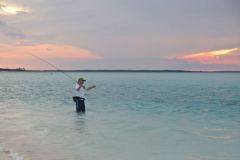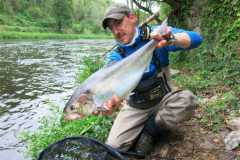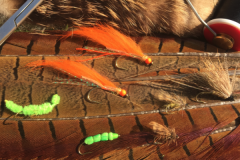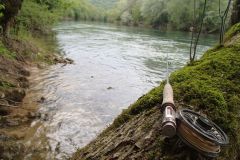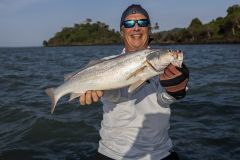The trigger fish!
The triggerfish is a member of the Balistidae family, which comprises 12 genera and 40 species.
Often referred to as the "trigger fish" because of its dorsal (and ventral) fins, which stick out like triggers, it can repel predators and hide under rocks. It is an aggressive, territorial fish, especially during the breeding season, which lives mainly on rocky and coral areas where it finds its food consisting of crustaceans for those we seek out in fly-fishing.
They have small mouths, but very powerful teeth for crushing the shells of crabs and sea urchins, which they love.
It is found in certain parts of the Caribbean such as Venezuela, Mexico and Belize, where the species captured is often the gray triggerfish or triggerfish capriscus or "cochito" in Spanish.
Other species found in the Indian Ocean include the yellow-margined triggerfish ( pseudobalist flavimarginatus ), which is common not only in the Seychelles but also in the South Pacific, as in Polynesia with the titan triggerfish ( balistoides viridescens), the largest species, and the picasso triggerfish ( rhinecanthus aculctus ).
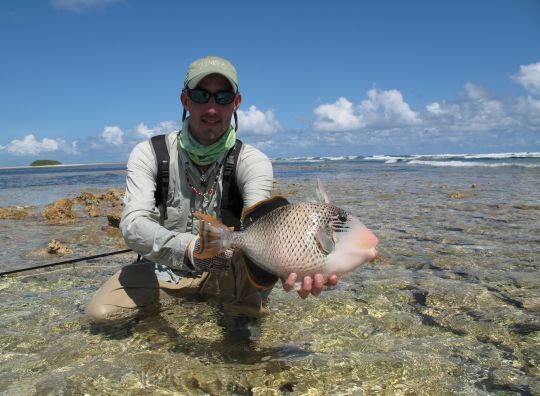
Fishing for triggerfish
The triggerfish can be fished when stalking permit or bonefish, as it can be found in identical habitats, but mainly in the reef zones, rocky sectors and coral areas favoured by these two species, depending on the destination.
You can also search for it specifically when it's present, such as on certain destinations.
When they're looking for crustaceans, they search the bottom, head down and often tailing (tail sticking out of the water), which makes them easy to spot from a distance. What's more, they're either colored or dark, making them easy to spot. It's always exciting for the angler to see these fish feeding. It's fun fishing, but not always easy.
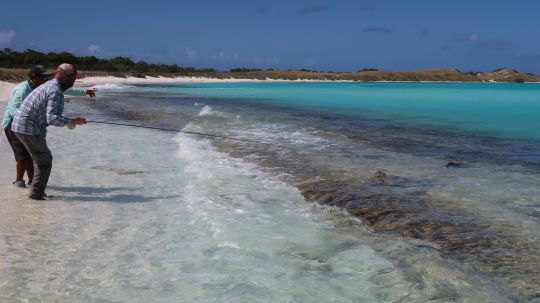
It's a disconcerting fish, because sometimes they're very wary and difficult to approach, or run away with all their fins as soon as the fly is placed, and other times they don't pay any attention to you, and they can come from far away to swoop down on your fly!
In all cases, crab and shrimp imitations should be weighted to sink quickly, and mounted on a 2 to 1/0 strong iron hook (recommended). Their powerful jaws can crush your fly and break your hook.
Because of its teeth, it can also cut the tip of the leader, so it's a good idea to use a fluorocarbon in 20 lbs or 25° minimum.

Generally speaking, you need to cast close enough to the fish for it to spot the fly. If this is not the case, you need to animate the fly strongly so that he detects it, and as soon as he sees it and gets close to it, let it sink back to the bottom. Most of the time, he'll follow it, then if he likes the fly, he'll come and take it either on its way down or on the bottom. Crab and shrimp imitations are most often used. They seem to like flies with a bit of color, such as orange.
It's common to miss the hooking, as the triggerfish has a very small, hard mouth with many teeth. The hook has difficulty in setting and there are usually several hits before the hook is set correctly. You have to hook with the fly line so as not to take the fly completely out of his field of vision if you miss. They come back quite often!
Despite their modest size, they are very powerful and take off like rockets! The first rush can be violent, then they resist by moving aside to use their oval shape and press against the water. Beware of coral and rocks that can cut your leader.
Be careful when handling the fish, as you must never put your fingers close to the fish's mouth. The best way is to unhook the hook with a pair of pliers.
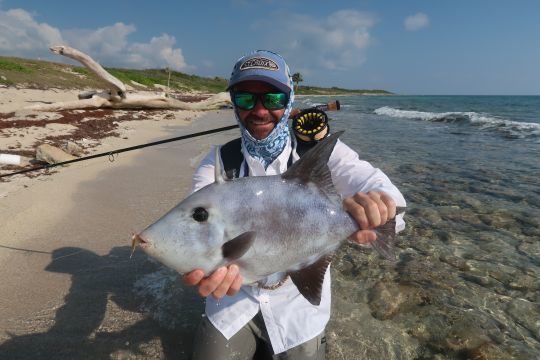
The best destinations to look for triggerfish
Caribbean: Belize, Mexico, Venezuela - Los Roques, but certainly other Caribbean destinations with coral and rocky bottoms.
Other species of triggerfish can be caught at these destinations.
Seychelles, Christmas Island, Sudan, Polynesia,...



